The history of Dubai is as fascinating as the city itself. Dubai is certainly known for its glamour, luxury and towering skyscrapers, but it wasn’t always like this. Once upon a time, it was a small fishing village with a population of just a few hundred people. Over the years, Dubai has transformed into a mega city that dazzles millions of tourists from around the world. So how did a small desert settlement turn into one of the Earth’s most modern and vibrant cities?
In this article, we’ll take a journey through time and discover Dubai then and now. You will learn how Dubai was created, and what makes it so special today. Besides, I will tell you about many popular historical attractions in Dubai where you can dive into the past and experience it firsthand. So buckle up and get ready for a leap back in time!
Overview: Jump Here to Your Favourite Topic
Early beginnings: how Dubai started
How was Dubai created? Dubai’s history dates back to around 3000 BCE. At that time, the area was inhabited by nomadic tribes who were drawn to the region’s sources of water around the mangrove swamps. The swamps gradually dried up, and people took over the area. They started farming and growing dates which later gained enormous popularity in the region.
As time passed, Dubai became a resting station for traders and caravans travelling between Oman and other areas in the Middle East. The buzz was there, and the settlement started getting more and more attention.
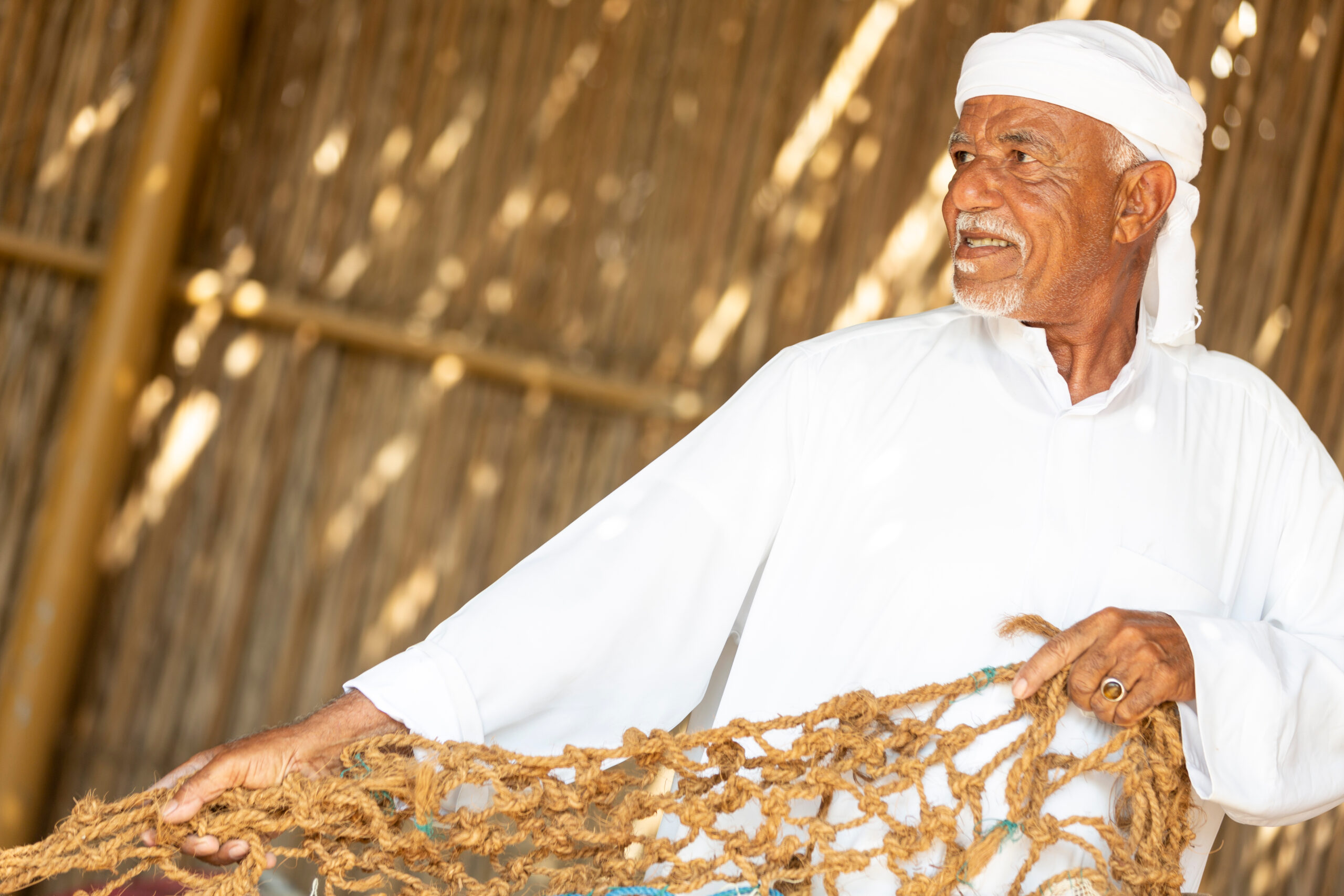
Origins of the city’s name: how Dubai got its name
So how did Dubai get its name? The origins of Dubai’s name are somewhat unclear, and there are ongoing debates. The first mention of Dubai (or Dubayy) was in the book of the Andalusian geographer, dating back to the end of the 11th century, and then a few hundred years later in a book of a Venetian merchant who traded pearls. There are now several theories about where the word “Dubai” comes from:
- Some historians believe that the name “Dubai” comes from the Arabic word “Daba” which means “to creep” or “to crawl”. This is thought to be a reference to the slow flow of the Dubai Creek (or Khor Dubai).
- Others believe that the name is derived from the word “Dabat” which means “a locust”. This is thought to be a reference to the swarms of locusts that once plagued the region.
- Finally, there is a theory that “Dubai” comes from Farsi and means “two brothers” — a beautiful allusion to Bur Dubai and Deira, two historical neighbourhoods, lying opposite each other on the banks of the Dubai Creek.
Bani Yas tribes in the history of Dubai
By the early 19th century, Dubai had established itself as a small fishing village with a population of around 700 people. The people of Dubai were primarily involved in fishing, pearl diving and trading. The region was ruled by various tribal leaders, and there was little political or economic stability.
The Bani Yas tribe played a significant role in the early history of Dubai. The tribe was one of the several original tribes of the United Arab Emirates and was responsible for the founding of Abu Dhabi. The Bani Yas tribe also played a crucial role in the formation of Dubai, as several members of the tribe moved to the region in the 19th century. They established trade routes and helped to create a more stable political environment for the region. By that period, the city was fortified, and you can find the reminder of that time in Al Fahidi Fort, home to the Dubai Museum.
The Al Maktoum royal family, who still rule Dubai today, are descendants of the Bani Yas tribe. The dynasty was established in 1833. The family has played a crucial role in the development of the city, from building infrastructure to attracting foreign investment. Today, the Al Maktoum family is one of the wealthiest families in the world and is responsible for much of Dubai’s success.
The early years were not easy for the new dynasty of Dubai rulers. First, the city was affected by the smallpox epidemic outbreak, resulting in the population being forced to move east of Deira. Then there was a big fire, but the settlement did not cease to exist.

Dubai Creek history: the heart of Old Dubai
Dubai’s past and present is undoubtedly linked to one special area. The Dubai Creek has always been the heart of Old Dubai. It’s the place where the city’s history began, and it’s still a vital part of the culture today. The Dubai Creek is a harbour that has been used for fishing, trading and transportation for centuries. It is a waterway between two important historical districts, Deira and Bur Dubai, located opposite each other.
In the early days of Dubai, the Creek was the centre of the city’s economy. Traders from all over the region would come to Dubai to buy and sell goods. The Creek was also used to transport goods to other parts of the region, including Iran and India. As time went by, many piers were built for loading and unloading the boats, warehouses were constructed for storing goods, and souks (markets) were created for selling spices, textiles, gems, fish and more.
By the beginning of the 20th century, Dubai had become a major trading centre. It was an important stop along the trade route from India, and many merchants and workers ended up settling in Dubai. Immigrants were exempted from paying taxes, resulting in a significant influx of workers pouring into the city and settling around the Creek (also known as Khor Dubai).
Today, the Dubai Creek is still an essential part of the city’s culture. If you are in Dubai, I recommend you take a boat ride along this waterway and explore the markets and shops that line its shores. You will be delighted to know that a crossing by a traditional abra between Bur Dubai and Deira costs just AED 1.
It’s an unforgettable experience, and the scenery will be just fantastic! There are many other multiple options, including one of the RTA sightseeing ferry routes, private boat charters and cruises in majestic dhow boats. You can learn about the difference between abras and dhow boats here.
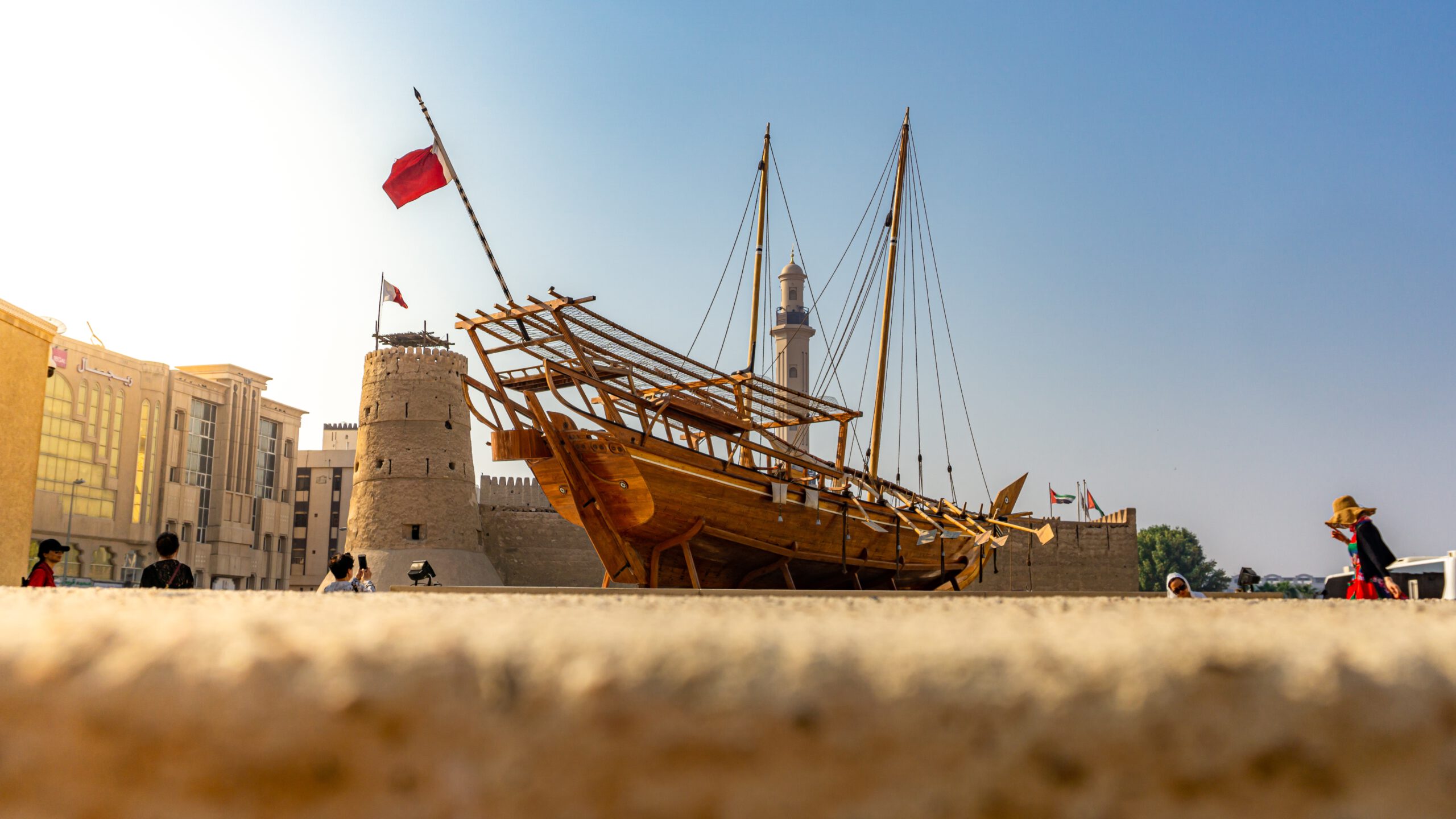
Dubai’s pearl diving past: the role of pearls in the history of Dubai
Dubai city history is also connected to pearl diving which was once a crucial part of the city’s economy. The waters around Dubai were rich in oysters, and the people of Dubai were skilled at diving for pearls. In the early 20th century, Dubai was one of the world’s leading exporters of pearls.
Dubai’s reliance on pearls came to an end in the 1930s when the global demand for natural pearls decreased due to the consequences of the First World War and the commercial development of cultured pearls.
However, the skills and techniques used in pearl diving are still a part of Dubai’s culture today. If you want to learn about the history of pearl diving, visit the Dubai Pearl Museum on Baniyas Road along the Creek. The entrance is free for all visitors. When in the Dubai Mall, make sure to explore the impressive waterfall dedicated to the pearl divers.
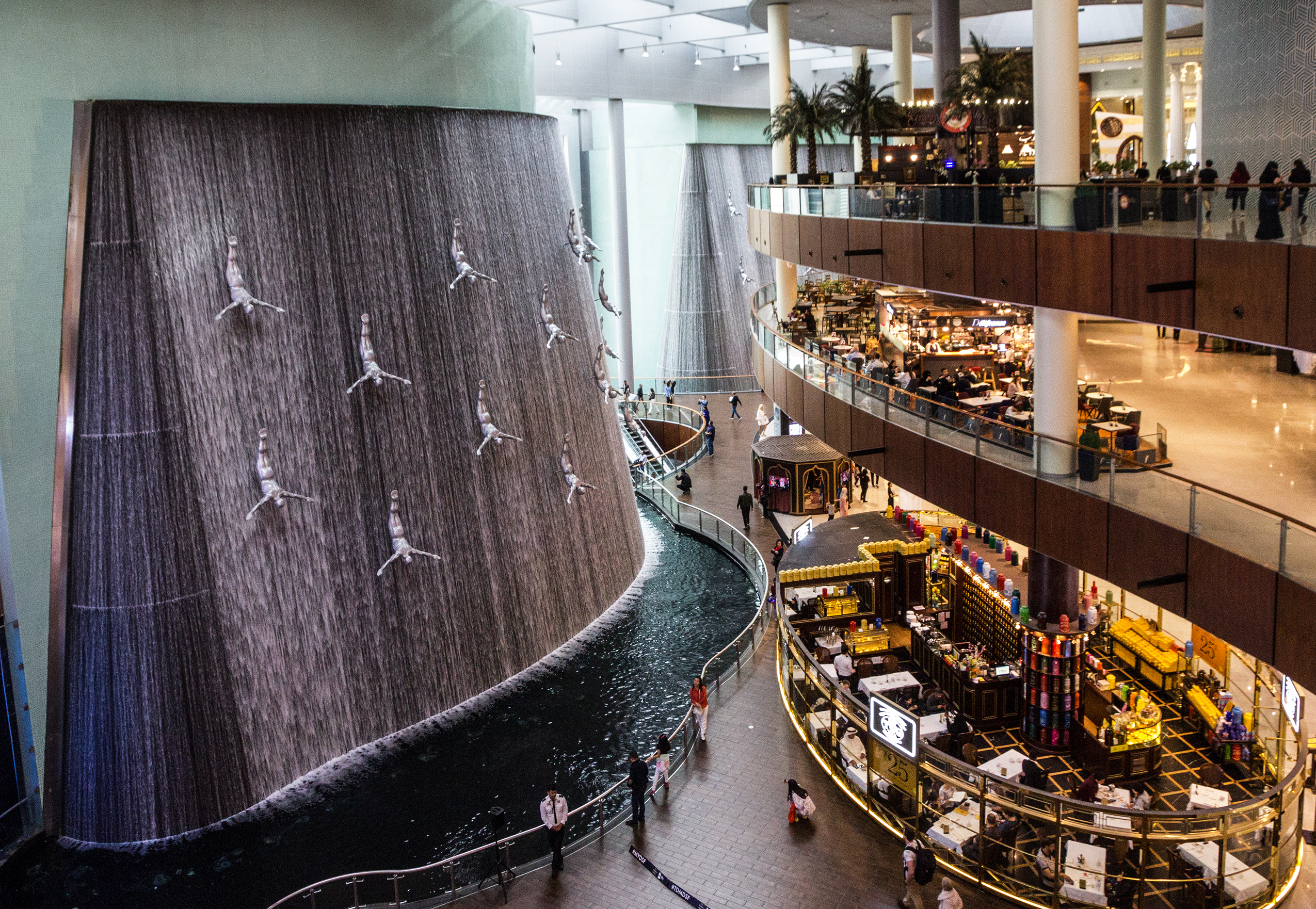
The rulers of Dubai: the Al Maktoum family
The Al Maktoum family has been ruling Dubai for almost 200 years, and they have played a crucial role in Dubai’s transformation. The family is one of the wealthiest and most powerful in the world. The current ruler of Dubai, Sheikh Mohammed bin Rashid Al Maktoum, has been in power since 2006. He followed his father, Rashid bin Saeed Al Maktoum, and grandfather, Sheikh Saeed bin Maktoum bin Hasher Al Maktoum, in further developing the city on the shores of the Arabian Gulf.
Under the leadership of the Al Maktoum family, Dubai has become one of the most prosperous and modern cities in the world. The family has invested in infrastructure, education and healthcare, ensuring that the people of Dubai have access to the best possible services. They have also worked to attract foreign investment, making Dubai a global hub of commerce and culture.
Sheikh Rashid bin Saeed Al Maktoum skillfully channelled money into big projects. The extension of the Dubai Creek, establishment of the Emirates airline and construction of the Jebel Ali port and the Dubai World Trade Center marked his time. The world looked with bewilderment at all these changes in the middle of the desert, but the sheikh had far-reaching plans. In 1971, Dubai, along with six other emirates, formed the UAE, and two years later, a new currency, the UAE dirham, entered circulation.
The discovery of oil in Dubai was also a game-changer for the emirate. Before the discovery, the region primarily depended on fishing and pearl diving for its economy. However, in 1966, oil was discovered in Dubai, and the emirate’s fortunes changed dramatically.

UAE royal families and dynasties now
How many royal families are in the UAE now? The United Arab Emirates is made up of seven emirates, each with its own ruling dynasty. The UAE is a constitutional monarchy, meaning that the ruling families have limited powers. The president of the UAE is elected by the Federal Supreme Council, represented by the rulers of the seven emirates, and serves a five-year term.
So here is the list of the UAE royal families:
- The Maktoum — the ruling dynasty of Dubai
- The Al Mualla — the ruling dynasty of Umm Al Quwain
- The Nahyan — the ruling dynasty of Abu Dhabi
- The Al Nuaimi — the ruling dynasty of Ajman
- The Al Qasimi — the royal dynasty of Sharjah and Ras Al Khaimah
- The Al Sharqi — the ruling dynasty of Fujairah
Modern history of Dubai
Dubai’s modern history is a story of innovation and progress. In the late 20th century, Dubai began to transform itself into a global hub of commerce and culture. The city invested heavily in infrastructure, building world-class airports, seaports and highways.
Dubai also sought to diversify its economy, attracting foreign investment and building a thriving tourism industry. Today, Dubai is one of the most prosperous and modern cities in the world, with a skyline that’s dominated by giant-like skyscrapers.
The current ruler of Dubai, Sheikh Mohammed bin Rashid Al Maktoum, followed in his father’s footsteps and continued to reform, turning Dubai into a city of wonders. He has seen and done a lot in his life: he studied in London and Cambridge, was the head of the Dubai Police and the Minister of Defence of the UAE, and also had an astonishing business career. He has conceived or steered numerous projects that have made many see Dubai differently, including the Burj Al Arab Hotel, Palm Jumeirah and Burj Khalifa.
Dubai historical neighbourhoods and famous historical places
If I have inspired you to experience the history of Dubai, the city has several historical neighbourhoods and popular historical places that are worth exploring.
Take the metro to Al Ghubaiba station (green line), then walk a bit along the Creek towards the Arabian Gulf, and you will find yourself in a charming Al Shindagha neighbourhood. This lovely historical area in Dubai is perfect for Insta-worthy moments.
Visit Al Shindagha Historical Neighborhood in Dubai to see:
- Dubai Heritage Village
- Sheikh Saeed Al Maktoum House
- Al Shindagha Museum
Then walk back to the famous Al Fahidi Historical Neighborhood (also known as Al Bastakiya), which dates back to the late 1800s. The district is home to traditional Arab houses and wind towers, which were used to keep the houses cool in the hot desert climate, art galleries and cafes.
Visit Al Fahidi Historical Neighborhood in Dubai to see:
- Bur Dubai Souk Market
- Arabian Tea House Café
- Grand Bur Dubai Masjid
- Dubai Museum / Al Fahidi Fort
- Sheikh Muhammad Center for Cultural Understanding
- Coffee Museum
- Bur Dubai Abra Station
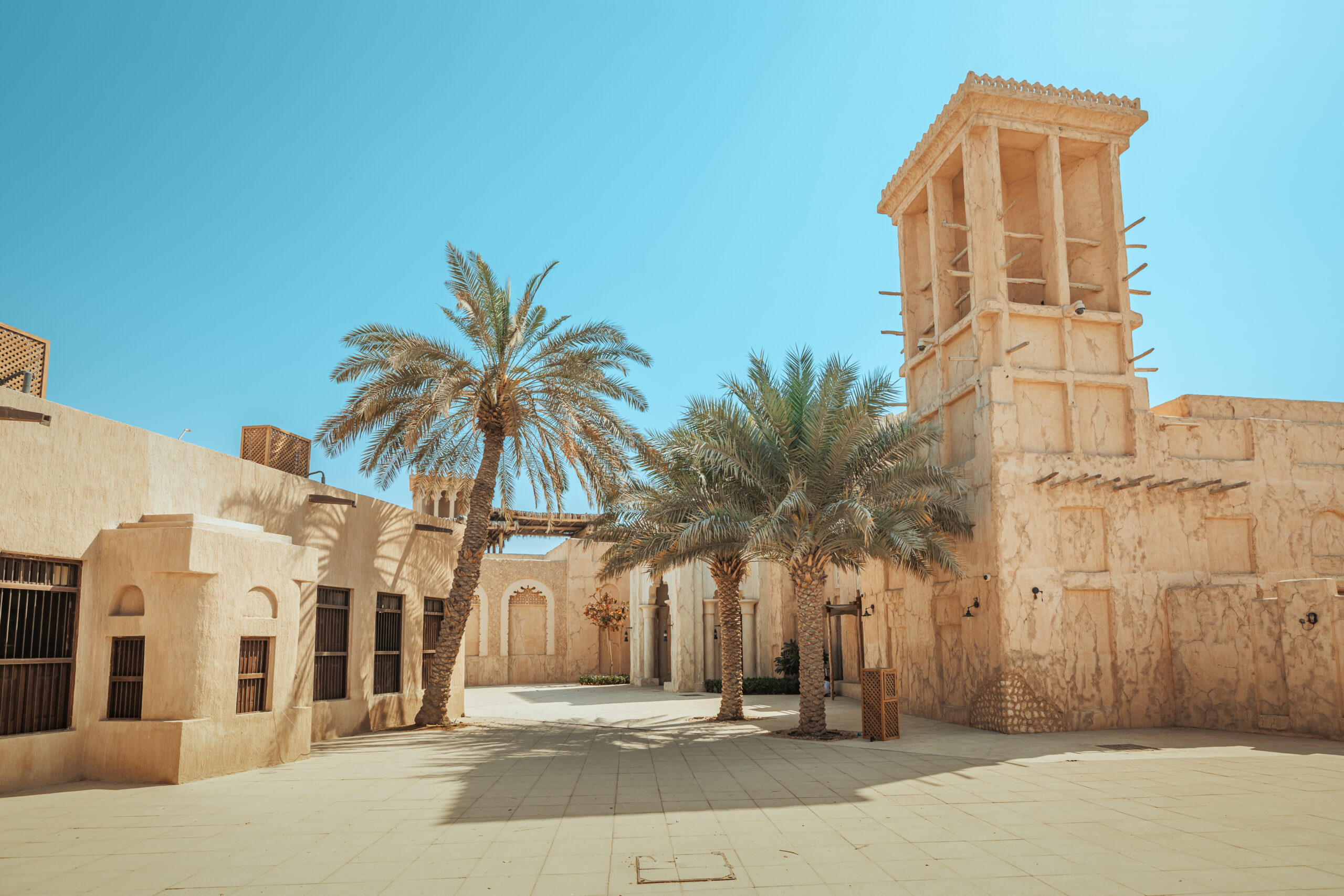
When you finish, take a traditional abra crossing for just AED 1 from Bur Dubai to Deira Old Souk Abra Station. During this memorable ride, you will enjoy a wonderful panorama of old Dubai from the water and take a breather from the heat.
Deira is primarily famous for its vibrant colourful markets, or souks. Visit the Dubai Gold Souk, the most popular market in Deira, home to more than 300 jewellery shops, where gold is the main material, and other precious and semi-precious stones are on display. Keep your eyes open for Najmat Taiba, the world’s biggest ring, having a staggering weight of 64 kg. Trying on that beauty is hardly possible!
Don’t forget to pay a visit to the Dubai Spice Souk, where you can experience the vibrant smells and flavours of Deira with a variety of spices, herbs and traditional Arabic perfumes. If you have time, explore the bustling Naif Souk, a traditional marketplace where you can find a variety of goods, including clothing, textiles, accessories and souvenirs.
Visit Deira in Dubai to see:
- Dubai Spice Souk
- Dubai Naif Souk
- Dubai Gold Souk
- Deira Clocktower
- Traditional restaurants

Guided tours of historical Dubai
You can certainly explore famous historical places in Dubai on your own, but joining a guided tour will add much more context to all the attractions you see. I love these two tours below, where you will learn a lot about the history of Dubai:
- 3-hour Old Dubai Walking Tour with Abra Ride and Street Food Tasting — an affordable option to visit several museums, historical buildings and markets, take an abra ride and try traditional street food and coffee.
Book 3-hour Old Dubai Walking Tour with Abra Ride and Street Food Tasting here
- 4-hour Old Dubai Tour with Al Khayma Heritage Restaurant Entry, Visit to Souks and Abra Crossing — an excellent option to see more of Al Fahidi neighbourhood by foot, explore the famous Al Khayma Heritage House, cross the Dubai Creek by abra and visit Deira souks.
Other famous historical attractions in Dubai
Away from old Dubai, in Jumeirah, you will find another famous historical site. The Jumeirah Mosque, one of the most beautiful mosques in the UAE. This building in the characteristic Fatimid style is also open to non-Muslims and provides a fascinating insight into Islamic culture and religion. You can join the tour organised by the mosque.
By the way, in Jumeirah, you can also explore the elegant Etihad Museum to discover the modern history of Dubai and the UAE. It is located next to the Union House, where on December 2, 1971 an agreement between the six emirates was signed to establish the United Arab Emirates.
Finally, I highly recommend visiting the Dubai Frame. While the 150-metre high building in Zabeel Park is not a historical attraction in itself, it serves as a symbolic gate between old and modern Dubai. Mentioned in the Guinness World Records, this dazzling frame has an observation deck on top, allowing you to see a splendid panorama of both historical Dubai and the towering skyscrapers.
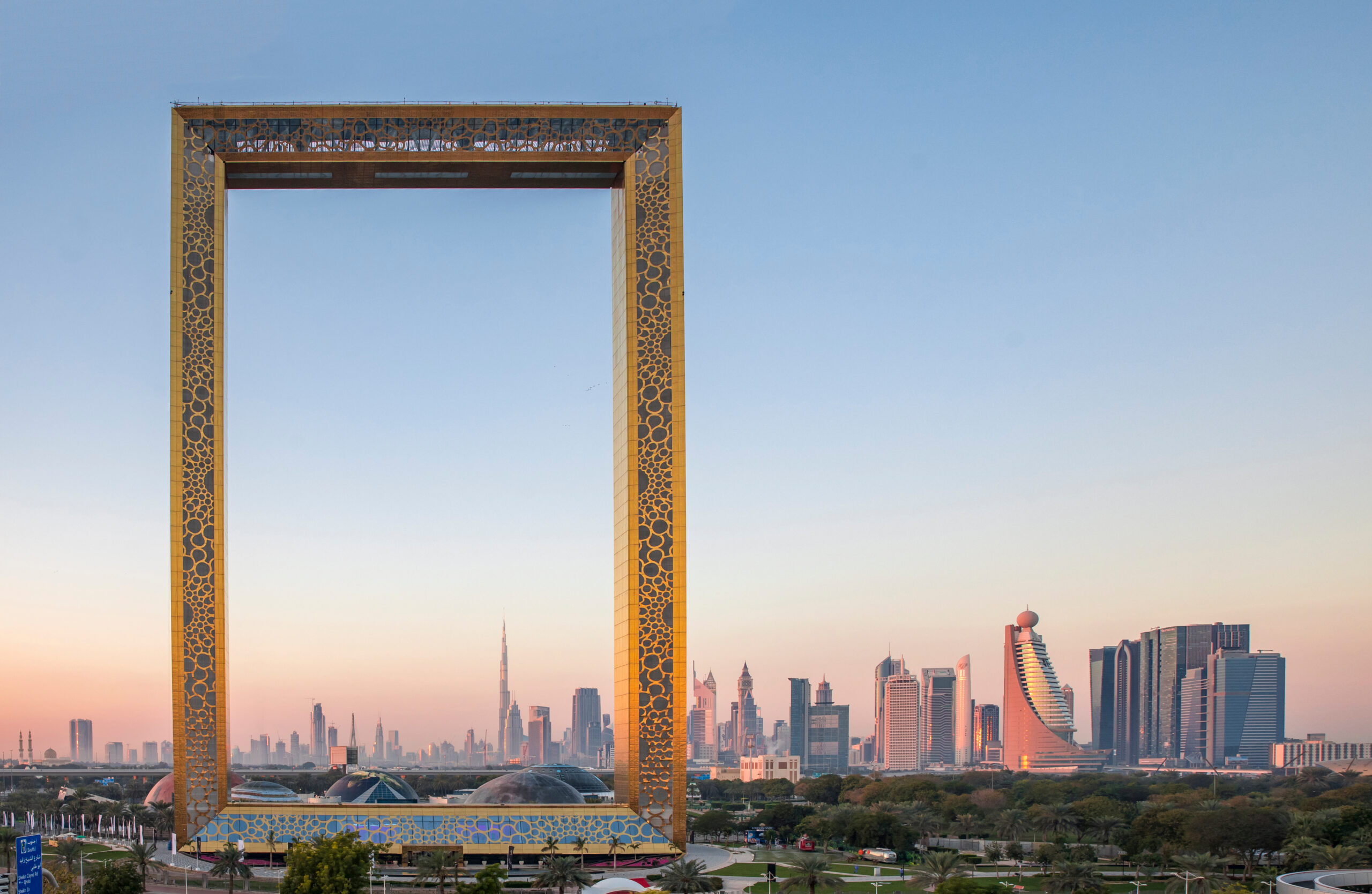
Future of Dubai
The future of Dubai looks bright. The city continues to invest in infrastructure and attract foreign investment, ensuring that it remains a global hub of commerce and culture. Dubai is also working to become a more sustainable city, with plans to reduce its carbon footprint and increase its use of renewable energy.
The “Dubai 2040” program aims to further stimulate the economic development of the city, expand infrastructure and beaches, and attract up to 50 million tourists a year. In addition, Dubai plans to develop artificial intelligence and explore the expanses of the universe. In 2015, the ruler of Dubai opened the Mohammed bin Rashid Space Centre. Few believed in the UAE’s space ambitions, but as early as February 2021, the Emirates Mars Mission proved successful.
The city is heavily investing in technology, with plans to become a centre of innovation and entrepreneurship. Dubai is already home to several tech startups and is working to attract more. With its forward-thinking approach and commitment to innovation, Dubai is sure to remain one of the most exciting and dynamic cities in the world in the near future.
Milestones in the Dubai history
Finally, here are a few important milestones in the history of Dubai.
- 1833: The Bani Yas tribe settles in Dubai, which was then a small fishing village.
- 1930s: The pearling industry declines, leading to a shift towards trade and commerce.
- 1960: Dubai International Airport is built, becoming a major hub for air travel.
- 1966: Discovery of oil at the Fateh Oil Field.
- 1971: Dubai becomes part of the United Arab Emirates.
- 1985: Emirates (airline) is founded.
- 1999: The construction of the Burj Al Arab, one of the world’s top-5 tallest hotels, is completed.
- 2001: Construction of Palm Jumeirah Dubai island starts.
- 2002: The Dubai International Financial Centre is established, becoming a hub for finance and commerce.
- 2010: The construction of the Burj Khalifa, the world’s tallest building, is completed.
- 2021: Expo 2020 Dubai is officially opened, one year later than planned due to the pandemic.
- 2021: Ain Dubai, the world’s biggest Ferris wheel, is opened on Bluewaters Island.
Our journey through the past and present of Dubai is coming to an end. The city’s success is due to many factors, including the vision of its rulers, the hard work of its citizens and many migrant workers, best innovations from the world and the region’s natural resources. So, whether you’re a history buff, a tech enthusiast, or just looking for a fun and exciting place to visit, Dubai is certainly the place to be.
What’s next for Dubai? Will it continue to thrive or will the famous quote “My grandfather rode a camel, my father rode a camel, I drive a Mercedes, my son drives a Land Rover, his son will drive a Land Rover, but his son will ride a camel“, which they say belongs to Sheikh Rashid bin Saeed Al Maktoum, become prophetic? Time will show, so stay tuned!
Prepare for your Dubai trip
Did you find this post helpful? Then click that little heart below and share it with your friends and family. Have fun in Dubai!


